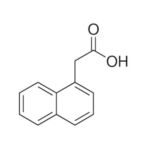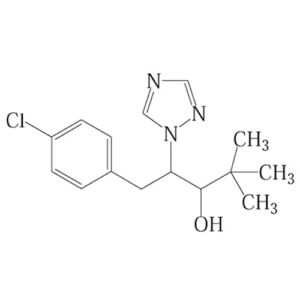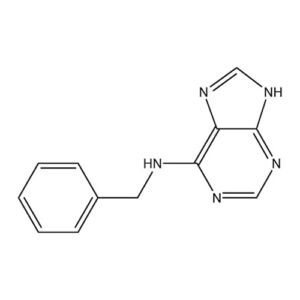Techinical:
98% 1-naphthyl acetic acid TC (NAA)
Formulation:
1%-5% 1-Naphthylacetic Acid AS
10% 1-Naphthylacetic Acid+40% 4-indol-3-ylbutyric acid SP
1.65% sodium nitrophenolate+1.2% 1-naphthyl acetic acid AS
17% choline chloride+1% 1-naphthyl acetic acid WP
Basic information:
Chemical name: 1-naphthylacetic acid, α-Naphthaleneacetic Acid, Alpha-Naphthyl Acetic Acid
Other Names: NAA
CAS No.: 86-87-3
MF: C12H10O2
Molecular Weight: 186.21
Place of Origin: China (Mainland)
Physical & Chemical Features:
Appearance: White crystalline powder.
Melting point: 126-134°C
Boiling point: 352°C
Density: 1.263 g/cm3
Solubility: Insoluble in water, Slightly soluble in hot water;
Soluble in ethanol, ether, acetone, benzene and acetic acid and chloroform. Naphthalene acetate sodium salt is soluble in water
Stability: stable in organic solvents.
Product characteristics:
1) 1-naphthyl acetic acid is a broad-spectrum-based plant growth regulator, can promote cell division and expansion, induced the formation of adventitious roots increased fruit set, preventing fruit drop, change female male flowers ratio. Via leaves and twigs of the tender skin and seeds into plants, the nutrient flow with the conduit to the whole plant.
2) It reduce cotton ball falling, increasing fruit weight gain, improve quality. Promote flowering fruit trees, anti-fruit drop, ripening increase. Prevent fruits and vegetables from falling flowers, forming a small seed fruits; for rooting cuttings and other branches.
3) It is widely used in agriculture, forestry, vegetable, flower, fruit etc. It can induce formation of adventitious root, improve cutting culture, promote fruit set, and prevent pre-maturation of fruit.
4) It can be processed into potassium salt or sodium salt, and then used as an aqueous solution.The sodium and potassium salts are soluble in hot water, and if the concentration is too high, water will crystallize after cooling.
Applications:
1. 1-naphthyl acetic acid is hardly soluble in cold water. It can be dissolved with a small amount of alcohol and diluted with water.
Or add a small amount of water to make a paste and add appropriate amount of water, then add sodium bicarbonate (baking soda) and stir until all dissolved.
2. Early-ripening apple varieties use smear and thin fruit to cause phytotoxicity. 40mg/L of autumn white pear will cause production loss. If the concentration is too high, it will cause deformity, dead leaves, shedding, etc.; if the fig is 50mg/L or more, it will cause phytotoxicity; if the amount of watermelon and melon is too high, it will cause phytotoxicity.
3, through the esophagus can cause poisoning, visible liver and kidney damage, no specific antidote, if symptoms of poisoning, should be immediately sent to the hospital for medical treatment.
4. Although it has a good effect on rooting of cuttings, it has the side effect of inhibiting the growth of stems and branches on the ground at higher concentrations, so it should be mixed with other rooting agents.
5. For foliar spraying, different crops or the same crop should be used at different concentrations in different periods. It must be used strictly according to the instructions for use. Do not increase the concentration to avoid phytotoxicity.
6. When using as a fruit-fruiting agent, pay attention to spraying only the flower. It is used as a whole plant to promote fruit setting, and it should be used in small amounts, and it is better to use it with foliar fertilizer and micro-fertilizer.
Package:
Technical: 1kg/plastics bag, 25kgs/Fiber Drum/Bag
Powder/Granule: 100g, 250g, 500g, 1kg, 10kg, 25kg, 200kg per bag/drum
Liquid: 100mL-1L, 5L, 10L, 20L, 200L, 1000L per package; or as per customers’ request.
Previous: DCPTA TC
Next Article: Indole-3-butyric acid TC AS SP








